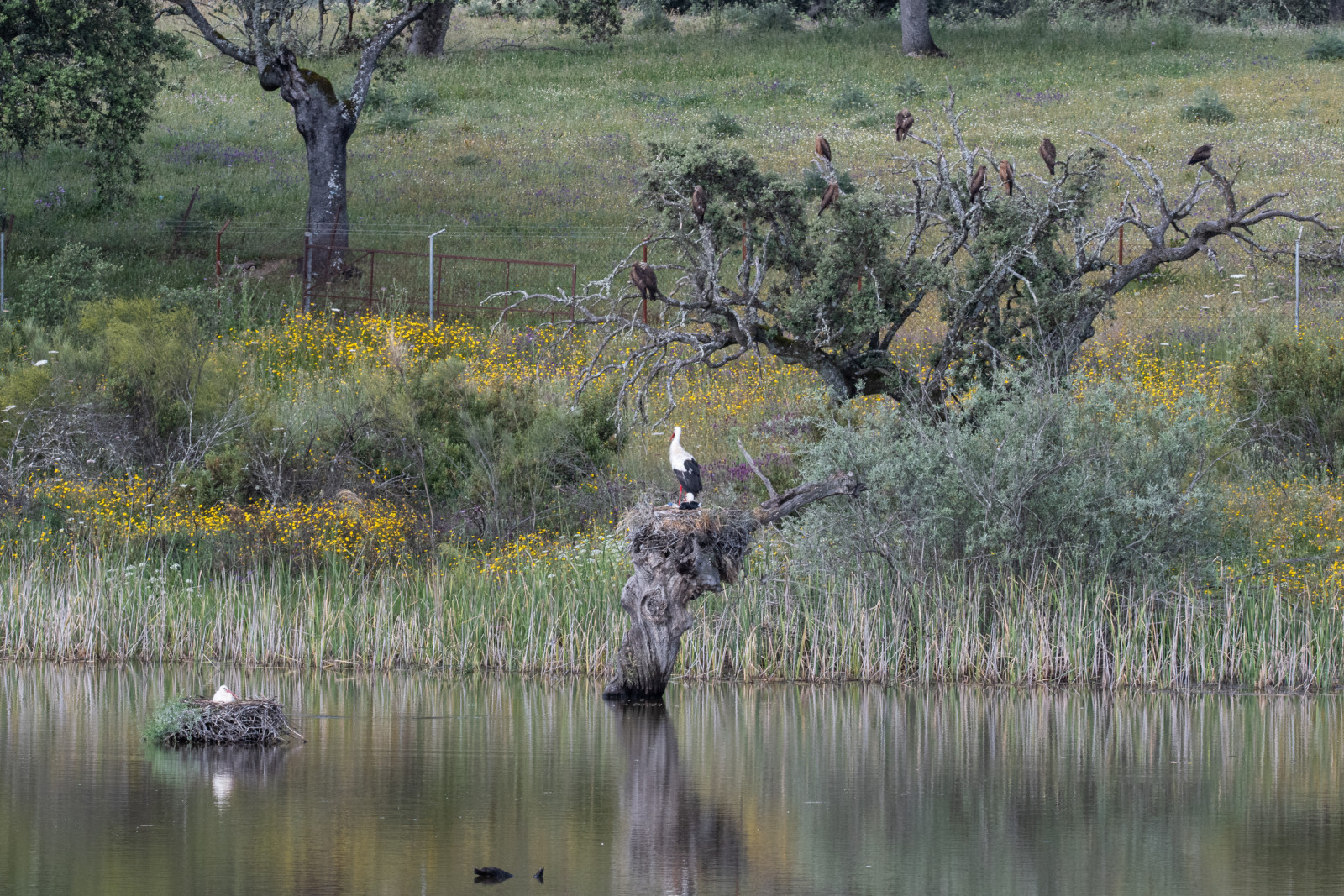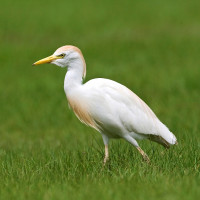Beschreibung
The southern tip of Embalse de Portaje is a wetland that is rich in birds. A causeway runs through the wetland. From this road you have a nice view on both sides, although the view to the south is obstructed by a fence. There is a bird hide, but unfortunately it is closed. However, the steps next to the entrance offer just enough space to look over the fence and offer a good view of the wetland. The old trees in the water are good nesting places for Weißstorch, among others. The trees around the lake are full of nests of Silberreiher, Seidenreiher, Graureiher, Löffler and Kormoran. Looking the other way you have a chance to see waders (especially during migration and in the winter months) or see Bienenfresser flying. The adjacent pastures are home to a good representation of Mediterranean birds, as well as several species of birds of prey.
Unfortunately, the bird hide on the dam has been closed for a while. If you have any update on the status of the bird hide, please leave a comment below.
Details
Zugang
Embalse de Portaje is close to the towns of Portaje (4.5 km) and Torrejoncillo (3 km). A few cars can park on the roadside opposite the bird hide. Click on the P in the map for directions. From the dam you have a good view over the lake, but there is another road that takes you further into the area. You have to cross a cattle grid.



.jpg)
